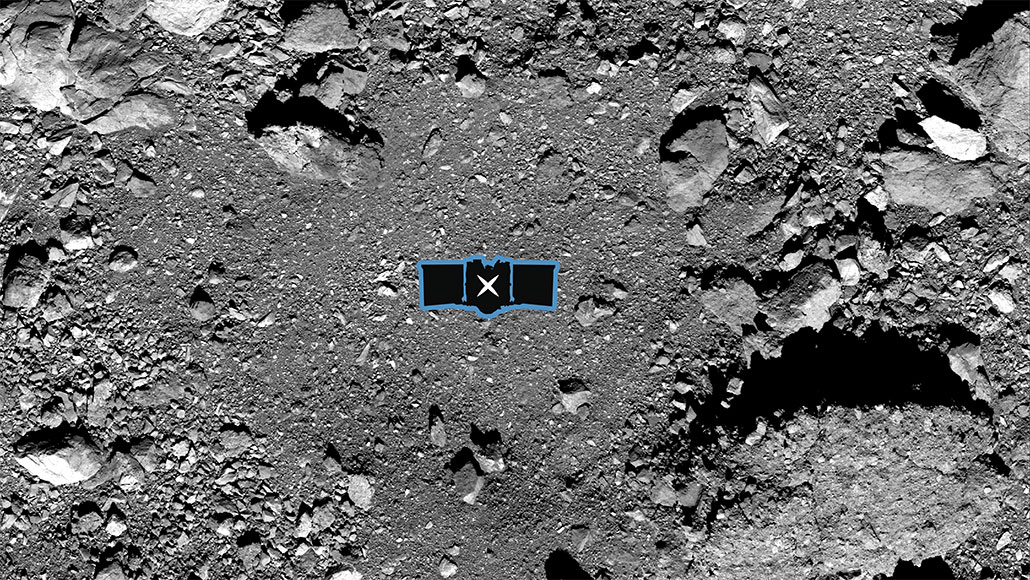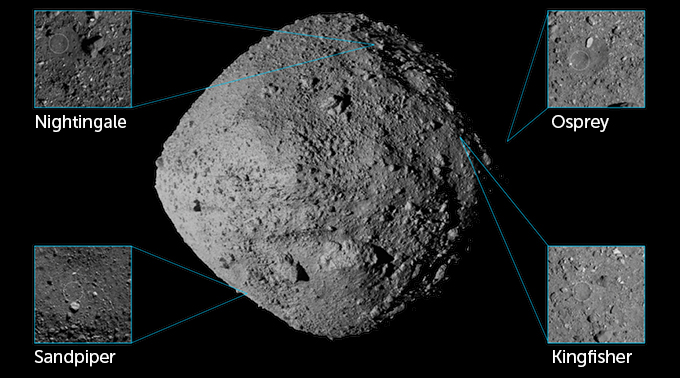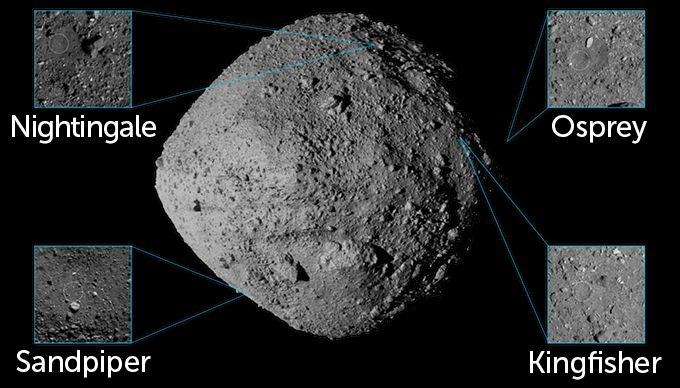
After nearly a year of appraising the asteroid Bennu from orbit, the OSIRIS-REx spacecraft finally has its sights set on a sample collection spot: Nightingale (pictured with an icon of the spacecraft superimposed on its future landing spot).
University of Arizona, NASA Goddard









